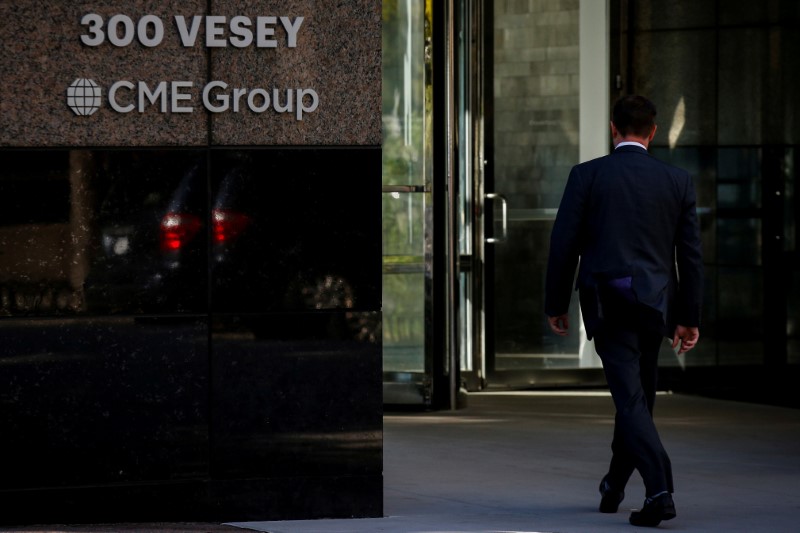By Karen Brettell
(Reuters) - Trading volumes in interest rate futures have overtaken those in U.S. Treasuries for the first time and look on track for further growth.
The popularity of futures reflects an evolving market which is drawing in new participants many of whom prefer anonymous, open market trading venues like the CME Group’s (O:CME), which has a near-monopoly on rate futures.
It also demonstrates the impact of regulations that have constrained risk taking by banks, harming liquidity in some bonds, and made trading over-the-counter derivatives more expensive.
Volumes in futures have surged to $398 billion a day from $257 billion in 2010, while Treasury trading volumes have dwindled to $396 billion a day from $442 billion in the same timeframe.
Volatility in Treasuries that sent benchmark 10-year yields to four-year highs last month has helped boost activity.
“CME rates product usage has increased from greater participation of buy-side clients and continuation of deep and consistent liquidity, in an environment when rates volatility has started to increase from very low levels," said Agha Mirza, CME’s global head of interest rate products in Chicago.
Bank of America (NYSE:BAC) Merrill Lynch' three-month MOVE index <.MERMOVE3M>, which gauges volatility in Treasuries, jumped to 67 in February, the highest in 10 months.
New rules that require more capital to back over-the-counter derivatives are also being phased in, which is driving more investors to futures as an alternative.
“Investors are comparing to futures and seeing where the futures alternative is cheaper,” said Kevin McPartland, head of research and market structure and technology at consultancy Greenwich Associates.
Greenwich estimates that trading in rate futures can be as much as 70 percent cheaper than doing the equivalent trade with a centrally-cleared interest rate swap. A Greenwich survey of dealers and derivatives users found U.S. respondents expected to move 11 percent of swaps trading to futures, while European participants planned to move 17 percent.
GREATER PARTICIPATION
Futures benefit from leverage and from not being held on bank balance sheets. Rate futures are also attracting firms seeking opportunity in fixed income as alternatives to equity strategies.
“As the principal trading world has moved away from equities trading due to a decrease in profit opportunities, fixed income has become a big growth area, particularly in futures markets for a host of reasons,” said McPartland.
The number of firms with large open interest in interest rate futures at the CME rose to a record 2,086 in February, and is up from 1,649 a year earlier. Volumes in the CME’s interest rate futures edged over 100 percent that of Treasuries on March 7, based on a 52-week moving average. That is up from 94 percent a year ago and 58 percent in 2010.
Rate futures account for 33 percent of the CME’s trading and clearing revenues, according to its most recent annual report.
Moves to relax some regulations may reduce the relative advantages of futures, though they are not likely to reverse the trend.
The Federal Reserve is seen as close to easing some of the bank capital requirements. Market participants have blamed a rule known as the supplementary leverage ratio for reducing liquidity in non-benchmark Treasuries known as “off-the-runs.”
“Some of the suggested changes on leverage would make trading-off-the-run Treasuries easier, which would reduce the relative attractiveness of futures,” said Michael Cloherty, head of U.S. rates strategy at RBC Capital Markets in New York.
The International Swaps and Derivatives Association (ISDA), which represents the privately traded derivatives industry, has also said it may challenge the capital requirements for swaps because they are more onerous than for futures.
"I think if you were able to get the charges down on swaps people would migrate to swaps because a lot of people prefer swaps to futures," said Michael Schumacher, head of rate strategy at Wells Fargo (NYSE:WFC) in New York.
To the CME, new regulations compliment capital advantages that already favored the futures contracts.
“All of those became more amplified and one could argue that there has been greater usage of futures,” Mirza said.
